By necessity, pistols are generally designed for the average hand size of their anost likely market: men. It makes sense from the manufacturer side to make their products easier to use for the majority of their customers.
For those of us who aren’t “normal,” it can be a bit more challenging. And it turns out that most everyone doesn’t seem to quite match the idealized hand model that’s used for most pistols anyway. Even with average and some larger hands, controls might not always be easily or consistently manipulated. Or, the shooter might be left-handed. Among the most important controls for any shooter to be able to reach is the magazine release, a necessary part of performing reloads.
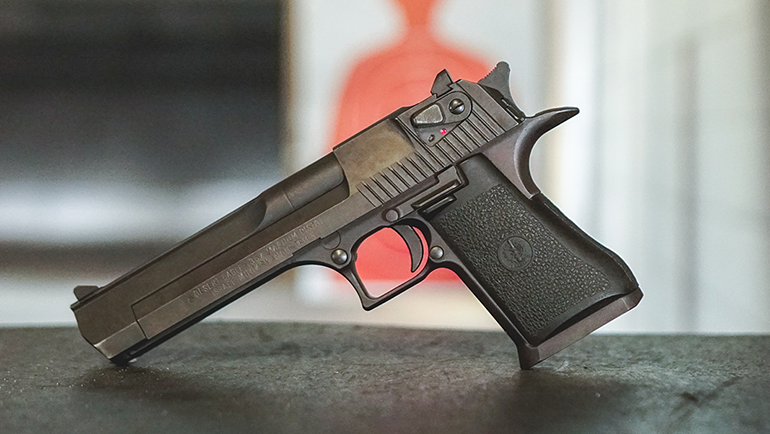
So what to do? I’ve got below a whole bag full of tricks that you can try to make your reloads more reliable and faster.
Tips for Reloading Pistols
The first part of reloading a pistol is getting the magazine in the gun out. That means the shooter has to manipulate the magazine release and either let the old magazine fall out through gravity or grab onto it and strip (pull) it out. The shooter also needs to get the new magazine and put it in the magazine well.
Getting at that magazine release is the trickiest part of the reload, so it’s where I’ll be focusing. We can debate another time on where the reload should take place, how best to get the new magazine into the gun, and efficient ways to get the gun back on target.
I’m also going to focus on the most common magazine release type found on American pistols: a button on the left side of the gun, theoretically under or near the shooter’s strong hand – right – thumb when gripping the gun. Some of these techniques are also adaptable to the European paddle-style releases found under the trigger guard, like on the HK VP9.
Ready to try them out? Let’s go!
As with cross-dominance solutions, we’ll start with a quick video first, and you can read on below for more details.
The Flip
When reloading, most people will try to multitask by reaching for the new magazine with their non-shooting hand while using their primary hand’s thumb to manipulate the magazine release. If you can’t reach the button, the simplest strategy is to just loosen your grip and lightly toss the gun to rotate it until you can press it. After inserting the fresh magazine, you reestablish your grip as you push your non-shooting hand back into position.
I’m sure you can already see some of the potential downsides. This technique inherently requires some loss of control over the gun. That’s a tricky proposition, especially if your hands are slick with sweat or rain or a little less nimble because of cold. It’s led to dropped guns, even among the highest levels of practiced and experienced shooters.
It’s also not a completely reliable option. The gun won’t always spin consistently, so you won’t be able to hit the magazine release every time. It’s even worse when you aren’t just standing still or if your hand is slicker or stickier than normal.
Flipping seems fast, but there are other methods just as quick, but less risky.
The Push
Instead of simply letting go and relying on a flick of the wrist to bring the magazine release to the thumb, the gun can be moved in a more controlled fashion.
With the push technique, the shooter still loosens her primary hand a bit but then uses the fingers of that hand to push the front corner of the grip and rotate the gun into the thumb. This way, the gun flops around less and you can control exactly where and how fast the gun goes.
While the grip of the gun doesn’t remain fully encircled by the hand, the fingertips provide an extra point of contact that helps prevent a dropped gun. They also push the gun a little bit back into the web of the hand, not just sideways. That helps ensure that the gun stays in the hand and doesn’t slide out in the gap that’s created by opening up to loosen the grip.
As a bonus, pushing the magazine release into the thumb means that there is pressure from both sides into the button, making the press more positive and more likely to be successful in dropping the magazine out.
The downside is that you do need to be relatively coordinated to make the push technique work. It can also be difficult to get the magazine release to the thumb if you can’t touch the button enough to know where to push it towards or you don’t have a lot of practice with getting the angle of the push right.
The Pull
Sometimes, the push technique doesn’t work well because the gun is too big or you’re not familiar enough with it. That’s when the pull technique can be a better choice.
Here, the fingers of the non-shooting hand use the bottom of the trigger guard to gently pull and rotate the magazine release towards the thumb of the primary hand. The primary hand only needs to loosen up enough to allow the rotation to happen.
Since the pull happens when the non-shooting hand is leaving the gun to grab the fresh magazine, it’s a relatively natural movement. It’s a little bit slower, though, because you have to get through pushing the magazine release before you can reach for the fresh magazine. You also might not be able to reacquire a good strong hand grip until you push the gun back into place with your non-shooting hand as it moves back onto the grip, so both coming and going you’ll need two hands.
It’s still a very effective strategy though, especially when practiced with the push technique either at the same time or as an alternate strategy when the non-shooting hand isn’t available.
The Other Thumb
Another two-handed technique is to use the thumb of your non-shooting hand to press the magazine release.
The primary hand doesn’t have to do anything but maintain its regular grip on the gun. A slight modification to how your non-shooting hand leaves the gun is all that you need to accomplish this technique. In return, you won’t lose even the slightest bit of control over your gun.
Because the gun stays strongly gripped, it’s possible to press the magazine release very firmly. The button will also always be in the same place relative to the shooting hand, so the physical landmarks of finding it with the non-shooting hand thumb never change. Ultimately, the technique is very reliable and consistent.
The downside, because you do need two hands, is that there’s no backup for single-handed shooting that is similar, like the push/pull options. You’ll need to learn something completely different to address those situations.
The Trigger Finger
So far, every technique described assumes that the magazine release button is somewhere in the neighborhood of the shooting hand’s thumb. That might not always be the case, especially if you are left-handed and shooting a pistol set up for a right-handed shooter.
Ambidextrous pistols or flipping the magazine release to the other side aren’t always options, so what then? The most common answer is to use the index finger of your primary hand – that’s right, the tip of your trigger finger.
It can seem awkward to bend your finger far enough to press the magazine release, but it works very well for some shooters. They don’t have to break their grip at all or as much as some of the other methods. As a bonus, they can perform the technique one-handed too.
However, while your index finger can’t be in the trigger guard or on the trigger while it is pressing the magazine release, it can slip in when you are trying to reload quickly or under stress. Practice under safe pressure is necessary to ensure that you don’t have an accidental or negligent discharge while using this technique.
It can also look like your finger is in the trigger guard because it’s not straight and high along the slide as it would be for a traditional reload. If you are at events where a finger in the trigger during a reload leads to disqualification, or around range safety officers who are unfamiliar with the technique, that can cause problems.
Still, this technique is preferred so much by some left-handed shooters that they prefer their magazine release on the left side of the gun. For that matter, some right-handed shooters will move their magazine releases to the right side. For lefties, this is an extra advantage because they aren’t limited to being comfortable shooting pistols that are set up opposite to most of what’s available off the shelf.
It’s also one of the few strategies that’s directly transferable to paddle-style magazine releases that are part of the underside of the trigger guard.
Hardware Solutions
So far, all of the different options are mostly ways in which you, the shooter, can work around a gun that doesn’t quite fit. The reality of the firearms market is that many people, even top shooters, can’t quite reach magazine releases and press them without compromising their grips in some way, and they have to use one of these ways to operate their gun efficiently.
However, with some guns, there are options that can either make one of these techniques more reliable or make it so that you don’t have to use them at all. If you are a competitive shooter, check your rulebook before making any of these changes, as not all of them are allowed for various competitions or gun divisions. Some of these options also may not be suitable for defensive firearms.
Extended Magazine Releases
One gun modification that might be possible for you is an extended magazine release. These are replacement parts that are either longer, larger, or shaped differently than the factory original magazine release.
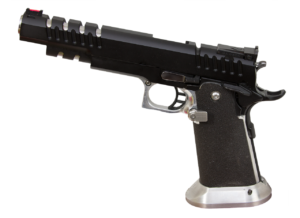
Extended magazine releases may make it possible for the button to lie directly underneath your shooting hand’s thumb so that you can simply press it by squeezing the thumb in. If not, it can provide a more positive felt index so that when you flip, push, pull, or use another finger to press the button, it’s less prone to error because you’re just adjusting position to press with more force, not to find the release in the first place.
A word of caution: a too-extended or enlarged magazine release can also cause more malfunctions. When it’s too easy to press the button, you may find yourself without a magazine in the gun at all because you’ve squeezed the grip too hard or in just the right spot. It’s important to be careful to not allow a part that helps one relatively minor manipulation get in the way of your standard grip for actually shooting.
Grip Modifications
You might also be able to modify the grip of the gun itself.
If you have a pistol with interchangeable parts to change the size of the grip, make sure you try all of the different sizes available. For instance, the Smith & Wesson M&P small backstrap can make a big difference in being able to reach the magazine release.
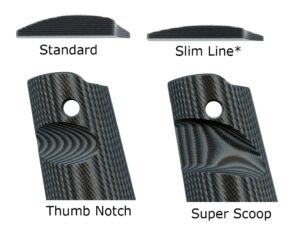
Almost all pistols with removable grip panels, such as 1911s, also have factory and aftermarket options that can make the grip size smaller and controls easier to manipulate. You’ll want to look for “slim” grips, those without palm swells, or those with cut-outs that get the thumb closer to the magazine release.
Certain guns can also be directly modified, through a process called grip reduction when parts of the grip are removed or reshaped to make it smaller or better suited for the individual. It’s best to leave making these changes to an experienced professional because incorrectly performed work can permanently damage the gun or reduce its value.
So Now What?
That’s a lot of different ways to hit one little button on your gun. Which one should you use? The one you’re most comfortable with, meaning the one that is most consistently reliable for you and fastest after you’ve put in some work to learn the technique. It might be a combination or variation of the options I’ve presented, and it might be different for different guns. You’ll have to try them and see, then report what works best for you.

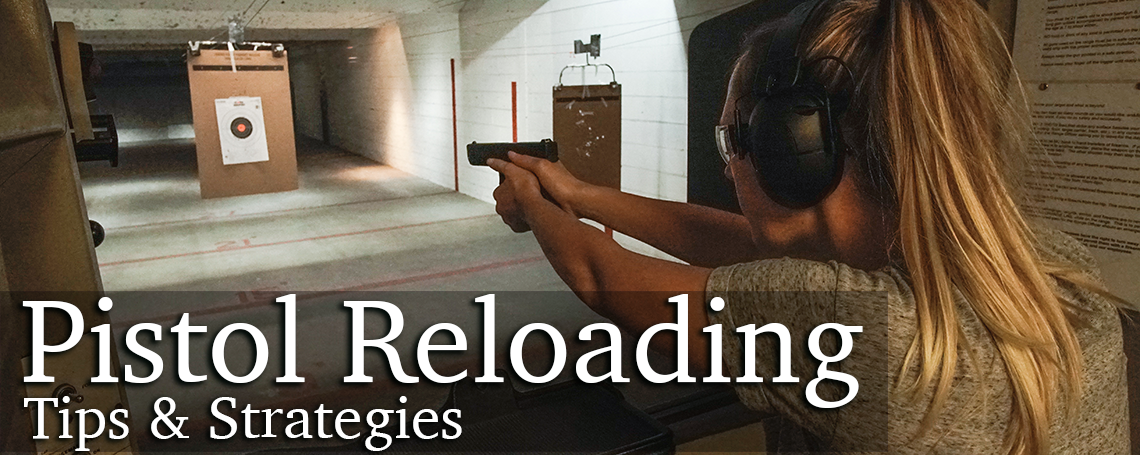
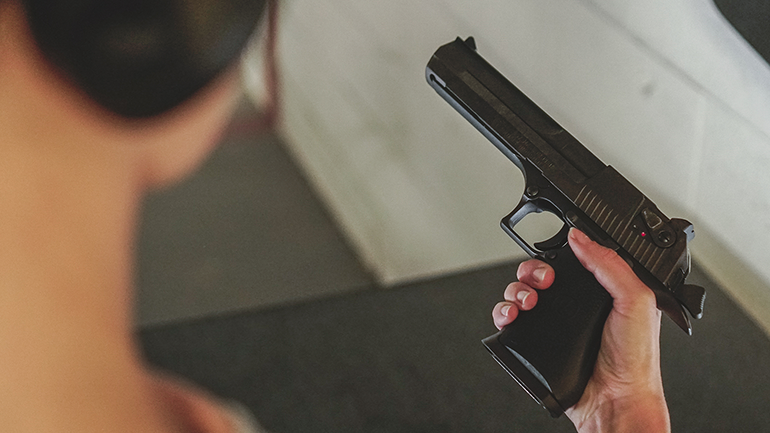
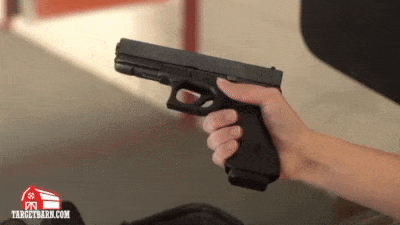
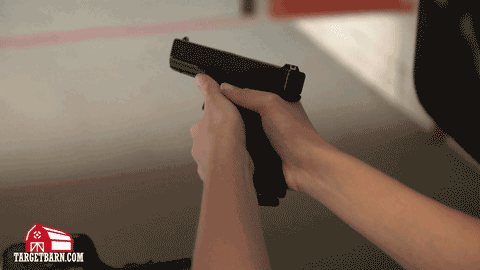
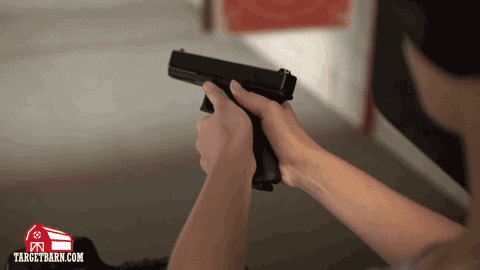
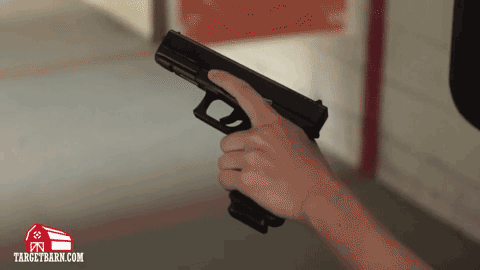
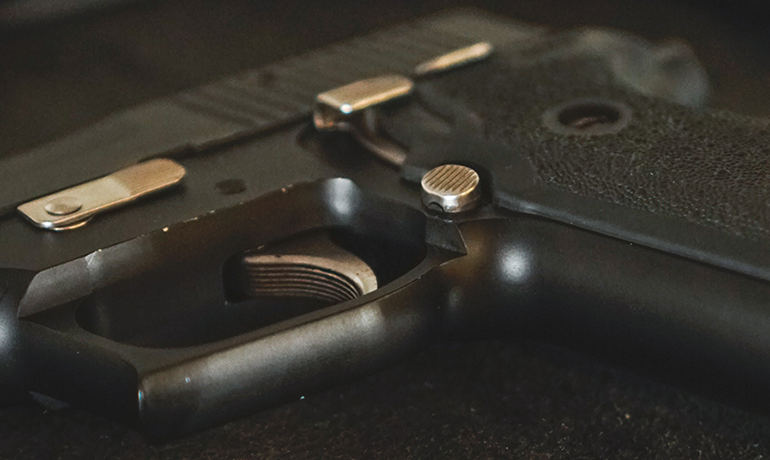
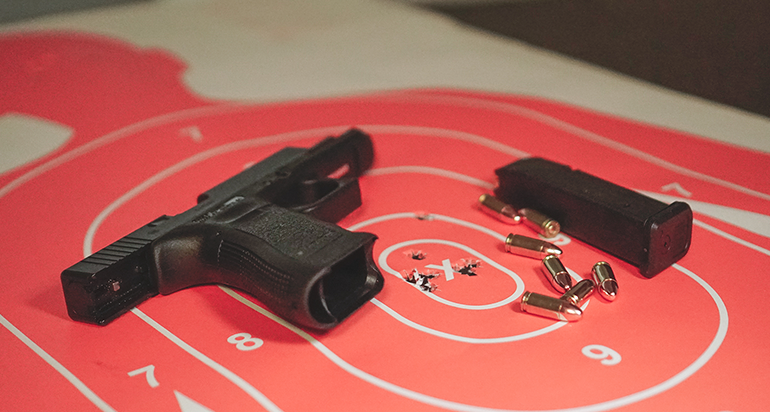










Excellent article Annette